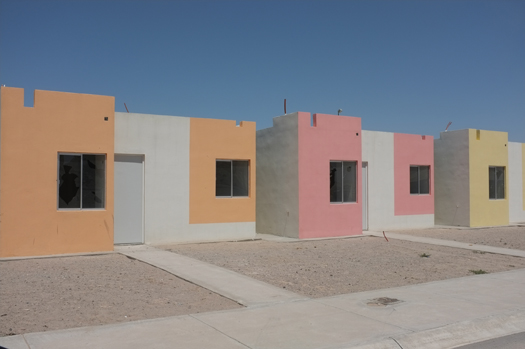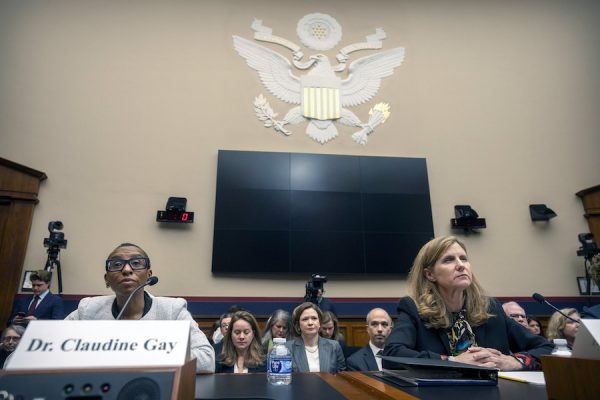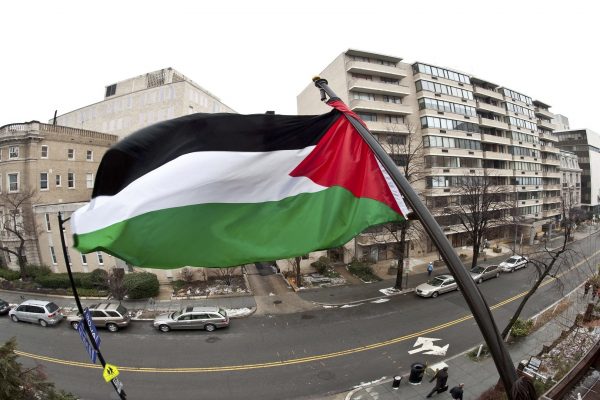We drive slowly up a broken concrete street between squat block and adobe homes, heading toward a trio of shacks on a rocky outcrop. Below us spreads the rest of Juárez, a vast manufacturing metropolis in the desert, just across the border from El Paso, Texas.
Fernando, our driver, points out a brightly painted bungalow. His adult son was abducted here in December 2010 and eventually released for a shockingly high ransom that left his family indebted to relatives all over Mexico and the United States. But Fernando assures us not to worry, that things are much better now.
From 2008 until 2011, Juárez was among the world’s most violent cities. The killing reached its peak in 2010, with more than 200 of every 100,000 inhabitants murdered. The dead spilt their blood in the war for drugs—some for a piece of the action, some for dominance of the action, and some merely because they got in the way of the street trade. In 2008, when President Felipe Calderón marshaled federal forces to sweep the city clean of the Juárez Cartel, the fighting exploded, leading many to suspect that the government was securing the area for Joaquin “El Chapo” Guzman’s Sinaloa Cartel, which rode the army’s coattails into town.
But today the numbers are pointing in the right direction. In 2010 there were 3,622 murders; in 2011, 2,086; and, through May, only 486 this year.
We continue past the bungalow until the narrow street dead-ends in front of the shacks. We squeeze past one of the repainted old school buses that are ubiquitous in Juárez today as both public and private mass transit. I recall the teenage girls who were last seen alive before their long bus rides home during the waves of female homicides that first made Juárez’s violence famous nearly two decades ago.
My friend Debbie wants to visit a local named Lupe. She made her living wading across the Rio Grande in the 1980s and ’90s to sell fruits and vegetables door-to-door in what passed for a bohemian neighborhood in El Paso. The border was porous in those days.
Fernando stops the car, and we start to step out into the baking heat. “No,” he says quietly. He has spied cholos, gangsters, lurking in the shadows between the rocks and shacks. So we stay in the car, studying the scene in front of us. Laundry floats on clotheslines in the dry wind.
It’s true that homicides have abated, Fernando tells me. But you have to watch for carjacking and, if you run a business, extortion. Six months after his son’s abduction, while the violence was beginning to wind down, his daughter was nearly kidnapped. The girl who revealed the plot turned up dead a few days later, one index finger removed.
Yet Juárez is different than it was in 2010, when I last reported on the city for this magazine. It’s hard not to see the link, as many Juarenses do, between Calderón’s intervention and the relative calm. Everyone I talked to noted that homicides were down. And now there are fewer combat-ready army caravans prowling the streets and boulevards. The federal police checkpoints that disrupted travel on practically every major thoroughfare are gone. Brand-new university buildings have sprouted on the fringes of working-class neighborhoods. Anti-violence activists have sprayed a riot of color in strategic locations around the city, using public art to urge the gangs to lay down their arms.
And, astonishingly, the nightlife is returning. A college student from the University of Texas at El Paso told me about friends partying in Juárez. This is a curious irony. It was, after all, Juárez’s irrepressible nightlife that laid the foundation for the violence. The vice trades and prostitution—controlled with a heavy hand by huge international trafficking organizations—were policed from their inception with homicidal shakedowns, a collusion of cops and gangsters.
Fernando looks worried as we cruise by discos that will throb and shimmer come nighttime. The weekend before, in Chihuahua City, gunmen in police uniforms slaughtered partiers at a popular bar, leaving fifteen dead, including two prominent journalists. Maybe we’re misreading the signs of safety, Fernando suggests. Indeed, a few weeks later two severed heads and four hands will turn up in the parking lot of a large down-market club in the south of the city. This part of Juárez hardly looks like it’s rebounding: acres and acres of government-financed subdivisions stand nearly vacant, their residents having fled both violence and the recession.
These mixed signals are on my mind when Fernando drops us off at the fortified downtown border crossing in late afternoon. We make our way into the long line of pedestrians waiting patiently to head into El Paso, the safest large city in the United States. No matter how much better Juárez has gotten this year, it’s hard not to feel like our reentry is an escape.








